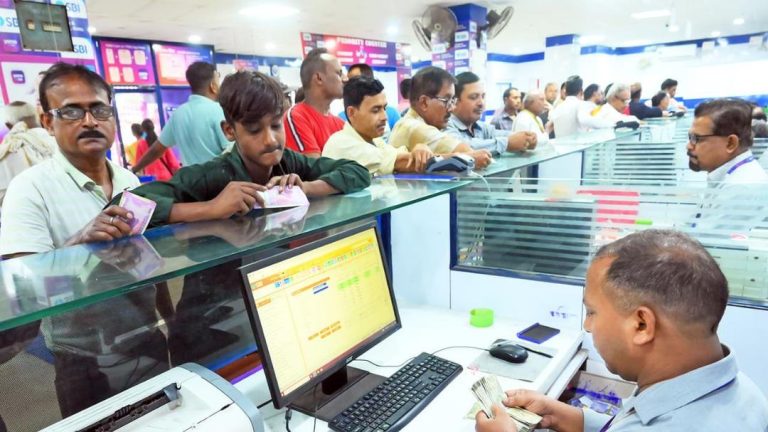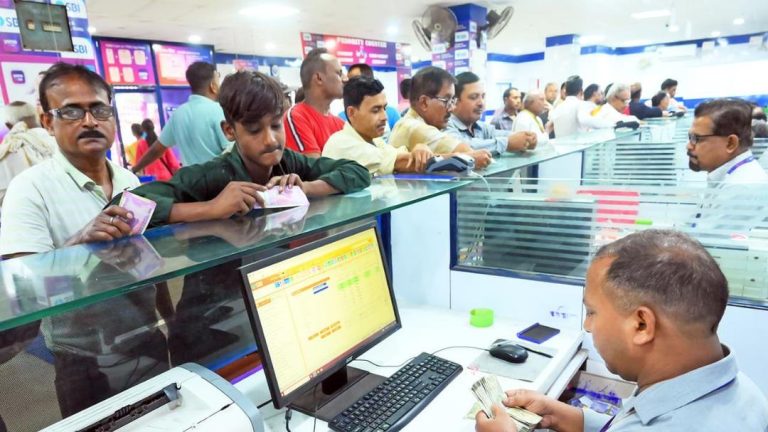
RBI’s government securities holdings jump to 14.2%: SBI report
The Reserve Bank of India’s (RBI) share in government securities has witnessed a significant surge, rising to 14.2% in June 2025 from 11.9% last year, according to a recent report by the State Bank of India (SBI). This notable increase in the RBI’s holdings of government securities has been accompanied by a decline in the exposure of banks to these securities. On the other hand, insurance companies have maintained a stable level of holdings. With the central and state governments poised to undertake substantial borrowings in the near future, bond yields are likely to remain rangebound. Furthermore, the RBI’s interventions in the foreign exchange market have led to a tightening of liquidity, prompting the central bank to initiate fresh Open Market Operations (OMO) to infuse liquidity into the system.
The SBI report highlights the shifting landscape of government securities holdings in India, with the RBI emerging as a dominant player. The increase in the RBI’s share of government securities holdings can be attributed to its efforts to manage liquidity and stabilize the bond market. By purchasing government securities, the RBI aims to inject liquidity into the system, thereby supporting economic growth. However, this increased participation by the RBI has also led to a decrease in the share of banks in government securities holdings. Banks have reduced their exposure to government securities, possibly due to concerns over the potential risks associated with these investments.
In contrast to banks, insurance companies have maintained a stable level of holdings in government securities. Insurance companies tend to have a long-term investment horizon, which enables them to ride out market fluctuations and maintain their exposure to government securities. The stability in insurance holdings is a positive development, as it provides a steady source of demand for government securities and helps to maintain market stability.
The upcoming heavy borrowings by the central and state governments are likely to have a significant impact on the bond market. With a large amount of government securities set to be issued, bond yields may remain rangebound, as the market absorbs the increased supply of securities. The RBI’s interventions in the foreign exchange market have already led to a tightening of liquidity, which may further exacerbate the rangebound nature of bond yields. To mitigate the effects of reduced liquidity, the RBI has initiated fresh OMO moves to inject liquidity into the system.
The RBI’s OMO operations involve the purchase and sale of government securities to regulate liquidity and stabilize the bond market. By injecting liquidity through OMO, the RBI aims to prevent a sharp increase in bond yields, which could have a negative impact on the economy. The OMO operations also help to maintain stability in the financial system, which is essential for supporting economic growth and development.
The increase in the RBI’s government securities holdings has significant implications for the bond market and the overall economy. The RBI’s dominance in the bond market may lead to a reduction in the yields on government securities, making them less attractive to investors. This could have a ripple effect on the entire bond market, leading to a decrease in yields across various segments. Furthermore, the reduced participation of banks in the bond market may lead to a decrease in the overall demand for government securities, which could put upward pressure on bond yields.
In conclusion, the RBI’s government securities holdings have jumped to 14.2% in June 2025, according to an SBI report. This increase has been accompanied by a decline in bank holdings and stable insurance holdings. With heavy central and state borrowings ahead, bond yields are likely to remain rangebound. The RBI’s forex interventions have tightened liquidity, prompting fresh OMO moves to infuse liquidity into the system. As the bond market continues to evolve, it will be essential to monitor the RBI’s actions and their impact on the economy.
The SBI report provides valuable insights into the shifting dynamics of the bond market and the RBI’s role in managing liquidity and stabilizing the market. The report highlights the need for continued vigilance and proactive measures to maintain stability in the financial system. As the Indian economy continues to grow and develop, the bond market will play an increasingly important role in channeling savings into productive investments. The RBI’s actions will be crucial in shaping the bond market and supporting the economy’s growth trajectory.
In the coming months, it will be essential to monitor the bond market and the RBI’s actions closely. The RBI’s OMO operations and other measures to manage liquidity and stabilize the bond market will be critical in maintaining stability and supporting economic growth. The SBI report provides a valuable perspective on the current state of the bond market and the RBI’s role in shaping its future.





